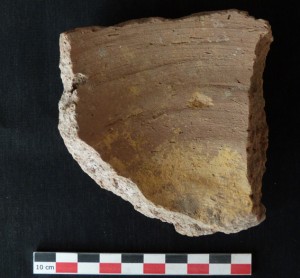Teaching classes and exams were finished this week in Munich and now some time for research has arrived! While we are still busy preparing the next monographs about the New Kingdom town of Sai, I am delighted that I will take a short break in the upcoming week going to Vienna. Thanks to an invitation for a lecture at the NHM Vienna, I will be talking about Tomb 26 and our latest findings there.
Among others, I will be presenting for the first time the very interesting results from C14 samples from Tomb 26. Unfortunately, the bone samples all failed to yield any extractable collagen for dating. This is why only charcoal samples were used and processed by the Beta Analytic Radiocarbon Dating Laboratory. Nevertheless, these results are informative and support the phases of use of Tomb 26 as proposed based on the stratigraphy and the ceramic evidence.
I would like to highlight the results for the individual who was the first person interred in Chamber 5. This adult male was the one buried along the northern wall with a deposit of flower pots and other vessels at his feet.
My archaeological dating – not earlier than Thutmose III, most likely mid-18th Dynasty – is now nicely supported by the calibrated dates of 1451-1291BC.
 Looking much forward to this small break and the trip to Vienna which is very likely to result in fresh input for our ongoing analysis of Tomb 26.
Looking much forward to this small break and the trip to Vienna which is very likely to result in fresh input for our ongoing analysis of Tomb 26.




